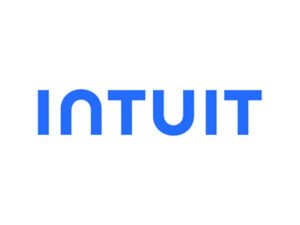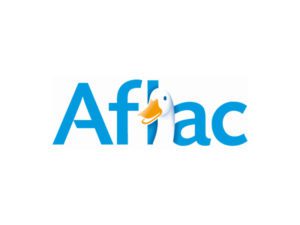Passkeys for E-commerce: A Game Changer Part 2
Passkeys for E-commerce: A Game Changer Part 2
In the last blog post, we covered the frustration of password management for users and how it has become a universal experience. Specifically, we covered why passwords are a problem, passkeys and their passwordless experience, and finally recommendations on the strategies required to make the move from passwords to passkeys.
In this blog, we will continue the conversation to provide a better view of what delivering a passkey-based passwordless experience requires and the benefits it will ultimately provide.
Implementation Considerations for Passkeys in E-Commerce
When rolling out passkeys for authentication in e-commerce, organizations must take a holistic approach that addresses technical, user experience, and platform-specific factors to ensure both security and adoption.
Use Cases
Passkeys should be strategically integrated into key user journeys where security and convenience are paramount. This includes not only sign-in and onboarding experiences but also high-security activities such as changing delivery addresses or redeeming loyalty points, and especially payment authentication. By targeting these critical touchpoints, e-commerce platforms can maximize the impact of passkeys, streamlining processes while significantly reducing the risk of account takeover and fraud. Leading retailers like Amazon and eBay have already demonstrated the value of passkeys in these scenarios, setting new standards for secure and seamless customer interactions.
User Experience
A successful passkey implementation hinges on user education and thoughtful UX design. Users should be primed about what to expect when encountering passkeys, with clear, reassuring messaging that explains the benefits, such as faster logins, enhanced security, and protection from phishing. Testing different messaging approaches is essential to identify what resonates and reduces confusion, especially since passkeys represent a shift from familiar password-based flows. Educational prompts, visual cues, and step-by-step guidance can help users understand and trust the new system, minimizing abandonment during onboarding or authentication. Ultimately, a seamless and intuitive experience will drive adoption and satisfaction.
Platform Support
E-commerce organizations must ensure robust support across all major platforms: iOS, Android, and web applications, while accounting for the diverse device combinations their customers use (e.g., iPhone with Windows PC). This includes providing a consistent experience for both new and existing users, regardless of their device ecosystem. Technical challenges such as cross-device authentication, account recovery, and syncing passkeys across platforms must be addressed to avoid friction and ensure reliability. Leveraging established passkey providers or APIs can simplify these complexities, enabling faster deployment and higher adoption rates while maintaining security and compliance.
Best Practices
Based on experiences with numerous global deployments, here are the key lessons we have learned:
- Delight Your Users
- Only offer passkeys when practical on specific devices
- Actively suggest passkey creation rather than waiting for users to discover the option
- Be mindful of users accustomed to seamless experiences in mobile apps
- Simplify Implementation
- Use SDKs with consistent APIs across platforms
- Employ headless widgets to reduce code complexity
- Design authentication rules that can be changed without app updates
- Enhance Security
- Verify user identity before allowing passkey creation
- Consider risk scenarios (particularly for high-value features)
- Protect against denial-of-service attacks
Getting Started
Passkeys are already being used by many companies globally, including large retailers. Users have experienced their benefits through accounts with Apple, Google, Microsoft, and Amazon.
As part of OneSpan, Nok Nok stands out in the authentication market by delivering a secure, scalable, and customizable passwordless authentication platform that addresses the challenges of modern digital security. As a founding member of the FIDO Alliance and a key contributor to passkey standards, our technology enables organizations to eliminate passwords, reducing the risk of phishing, account takeovers, and other cyberattacks. The platform supports seamless integration with existing systems, offers flexible deployment options (on-premise or cloud), and provides adaptive authentication that adjusts security measures based on real-time risk signals like device health and location. This approach not only strengthens security but also streamlines user experiences, leading to faster sign-ups, higher authentication success rates, and significant reductions in account recovery requests and operational costs.
Together, OneSpan and Nok Nok, we are proud that our advanced authentication technology is trusted by some of the world’s largest brands, including leading banks and mobile network operators. Our platform is purpose-built to handle internet-scale deployments with zero downtime, supporting all major devices and operating systems. With developer-friendly SDKs and prebuilt authenticator apps, we make it easy for organizations to modernize authentication across a wide range of use cases and user populations, all while reducing development and maintenance costs.
The right technology partner can make implementation easier. Look for solutions that offer:
- Intelligent credential detection
- Quick authentication with minimal latency
- Flexible support for multiple authentication methods
- Transparent migration from legacy biometrics
- Industry benchmarks for comparison
- Granular adaptive policies
- Detailed analytics and audit trails
Conclusion
Passkeys represent a genuine game-changer for e-commerce authentication. By offering a more convenient, secure, and consistent user experience across all digital channels, they address the fundamental problems of password-based systems while providing measurable business benefits.
The technology is mature, widely supported, and ready for adoption. For e-commerce businesses looking to improve conversion rates, enhance security, and reduce operational costs, the time to implement passkeys is now.









